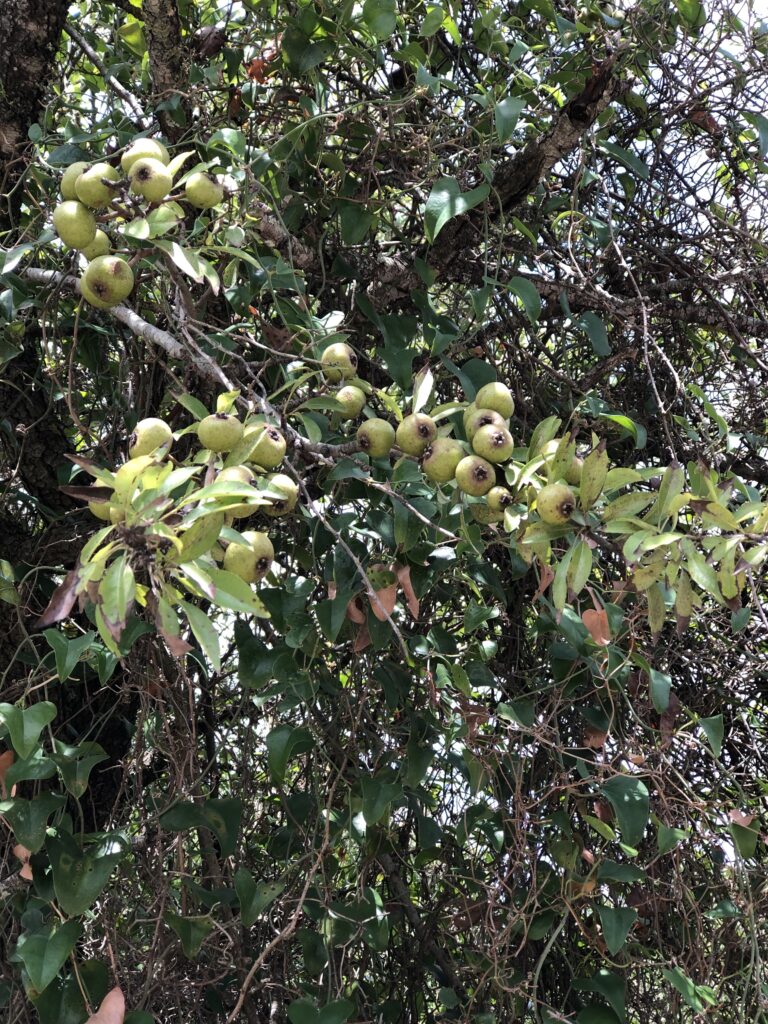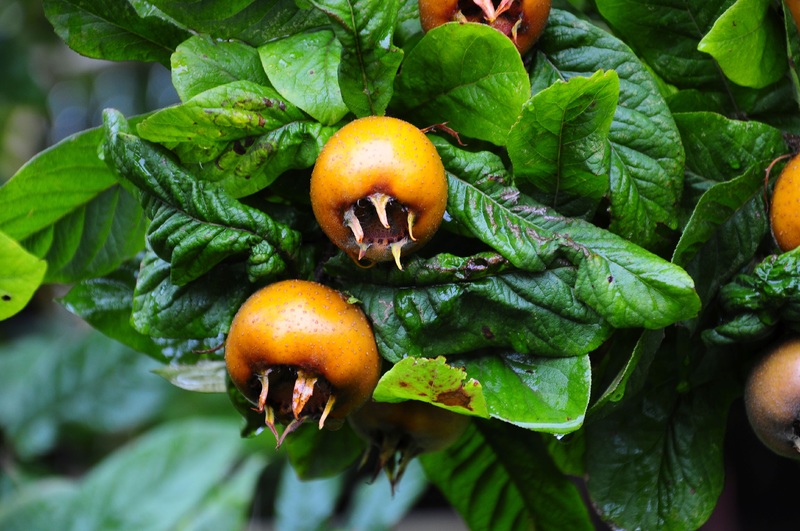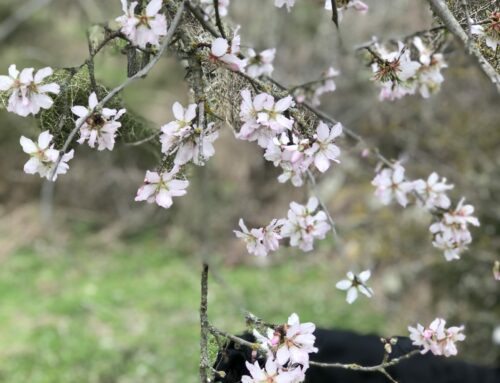
Welcome back to the second part of our journey into the heart of late autumn’s fruitful bounty, where we continue exploring the season’s hidden gems. In our first installment, we delved into the intriguing world of the quince and its mythological past.
As part of this three-part series, this installment focuses on two fruits embodying the spirit of patience and transformation: medlar and wild pear.
In the quiet descent of late autumn, when crisp brown leaves crunch underfoot, and the first frosts kiss fruit-laden branches, the medlar and the wild pear await those who understand the virtues of time and patience. These are not the fruits of instant gratification but rather the relics of a bygone era waiting to be rediscovered and appreciated once again.
These fruits, which once graced the tables of medieval Europe and kept folks from starvation in lean times, have been foraged through the centuries and stand as a testament to a slower pace of life that respects the rhythms of nature.

Magnificent Medlar
The Medlar fruit, with its rich history dating back over 3,000 years, has watched empires rise and fall since Greek and Roman times. Native to Iran and the Black Sea coasts, this fruit found its way into many English gardens, an early botanical immigrant introduced by the Romans.
Through the process of bletting, its autumnal flavors are reserved for the patient, revealing a taste akin to apple butter laced with spices. Medlar’s unique ripening lends it an air of enchantment. It was once believed that the fruit could carry the essence of time within its flesh, a reminder that nature’s processes cannot be rushed.
The Medlar’s transformation has a romantic air; it’s an ancient fruit that unfurls its full potential to those willing to wait. Its tale is one of culinary resilience—a testament to a time when each ingredient’s story was savored just as much as the ingredient itself. It beckons a revival, to be brought back from the annals of history and into contemporary kitchens.
Wild Pear
Medlar’s story is interwoven with that of the wild pear (Pyrus pyraster), a hardy survivor of the wilds, which also requires time to reveal its sweetest secrets. In Poland, as in Sardinia, the wild pear is rarely enjoyed in its raw state due to its hard and acidic nature. Instead, it is transformed through drying, cooking, or fermenting, incorporated into cakes, or as an irresistible filling for pierogi.
These two fruits share more than just the necessity of patience before indulgence. They are both shaped by the hand of history, having provided sustenance and comfort in times of scarcity. In Poland, wild pears were a seasonal delight and a resourceful option in leaner times. When times were tough, their seeds were roasted and ground as a substitute for tea or coffee, an innovative way to ensure nothing went to waste.
Both medlar and wild pear have been traditionally used to complement meats, their rich and complex flavors acting as the perfect foil to savory dishes. Medlar is traditionally turned into a spreadable paste known as “medlar cheese,” often paired with meats and cheeses. Similarly, wild pear, marinated in bottles of vinegar, becomes a condiment that elevates the flavors of a dish, enhancing it with a touch of the wild.
In these fruits, there lies a connection to our heritage—a culinary bridge from the past to the present. As we partake in medlar and wild pear, we not only enjoy their unique flavors but also engage in the stories and traditions they carry. We are reminded that in the age of industrial food, where supermarket shelves are lined with ever-available produce, there is something profoundly satisfying in waiting for the right moment to savor a taste that is truly seasonal.
Thus, the medlar and wild pear invite us to a feast of flavors enriched by history. They urge us to look beyond the immediacy of the modern palate and rediscover the forgotten practices that honor the land and the legacy of our ancestors. In the quiet lull of late autumn, these fruits, requiring care and patience, share their true nature, offering sustenance and a slice of history, ready to be brought back to the orchard and onto your table.
Related Posts:
Late Autumn Old World Fruits: Quince (part 1)








Leave a Reply